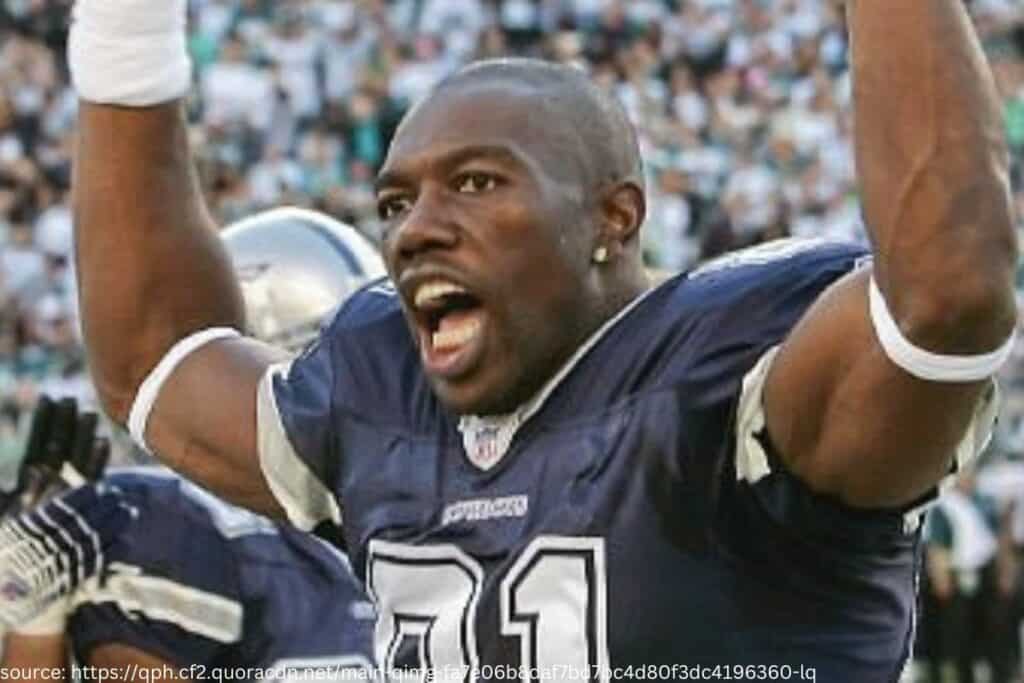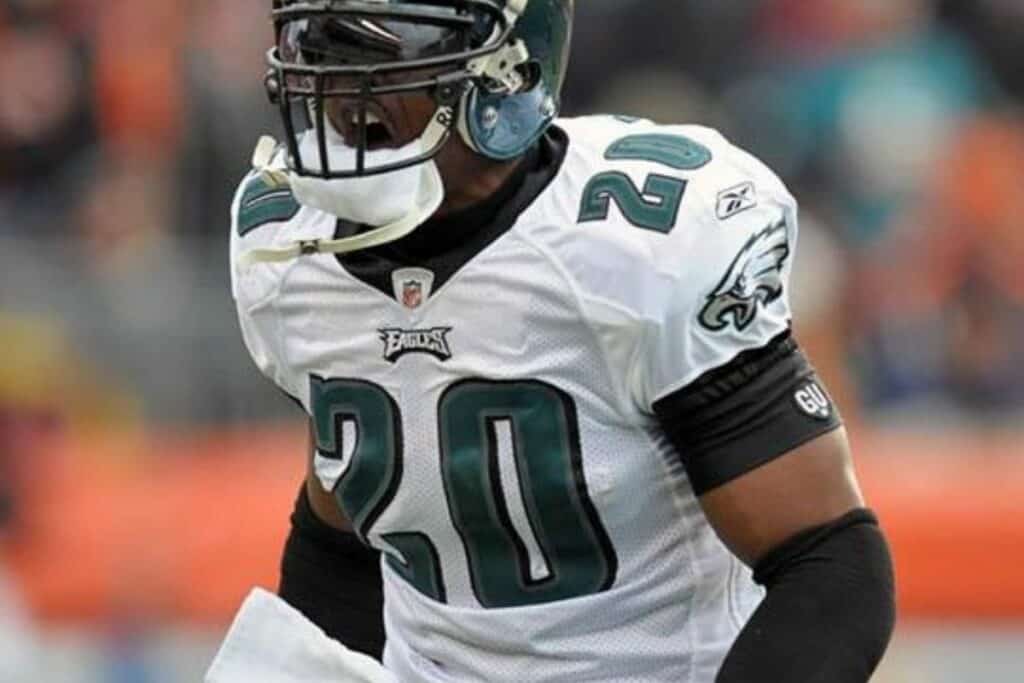Why Do Football Players Wear Bands Around Their Biceps? Uncovering the Reasons
Have you ever wondered why football players wear those bicep bands? These bands, often spotted during intense matches, are more than just a fashion statement. They’re a crucial part of a player’s gear, blending practicality with style.

Related Post! Why Don’t College Football Players Wear Knee Pads?
Why do football players wear bands around their biceps?
Football players wear bicep bands primarily for moisture management and muscle support. Made from advanced materials like nylon and polyester, these bands absorb sweat, ensuring a secure grip on the ball. They also provide muscle warmth and stability, reducing injury risk, while symbolizing team unity and personal style.
At its core, a bicep band’s role is functional – it’s a sweat manager. During a heated game, players can use these bands to wipe away sweat from their forearms and hands. This is vital for maintaining a firm grip on the football, essential for precise catching, throwing, and ball handling. After all, a slippery grip could lead to game-changing errors.
But there’s more to these bands than meets the eye. They’ve evolved into a symbol of personal style and professional identity in the world of football. Players often choose bands that resonate with their team colors or personal branding. Some use them to make a statement or uphold a tradition that they believe boosts their performance or team spirit. Thus, these bands are a perfect fusion of function and fashion.
Key Takeaways
- Bicep bands are vital for managing sweat and improving grip during the game.
- They symbolize a player’s style and identity on the field.
- These bands represent a unique mix of functionality and fashion in football.
Related Post! Fashion On The Field: Do College Cheerleaders Wear Tights?
A Journey Through Time: The History of Bicep Bands
Originally, bicep bands were purely practical. But over time, they’ve become an iconic part of football culture, symbolizing tradition and identity.
Tired of reading? Check out this video answer:
Bicep Bands in Sports Culture
In sports, especially in the NFL, bicep bands have become more than just a practical tool. They were first used to keep muscles warm and prevent injuries. Now, they’re a symbol of athletic prowess and style. They’re a part of the game’s tradition, adopted by players from professional teams like the New York Giants to high school athletes. Young players often see them as a rite of passage, emulating the pros they admire.
Prominent Figures and Milestones in Bicep Band History
Certain players have played a pivotal role in the popularity of bicep bands. Take Danny Clark of the New York Giants, for instance. His iconic image with bicep bands exemplified the peak physicality of NFL athletes.
Milestones:
- 1960s: Introduction of bands, primarily for practical purposes.
- 1980s and 1990s: Surge in popularity, as players like Danny Clark made them a part of their signature style.
- 2000s: Bicep bands became a defining element of a football player’s identity, from the NFL to high school leagues.
Today, these bands continue to signify the strength and dedication of the athletes who wear them, woven deeply into the fabric of football culture.
Related Post! How Much Do College Football Uniforms Cost?

Functional Purposes of Bicep Bands
Bicep bands in football are far from just fashionable accessories. They’re thoughtfully designed to meet the specific demands of the sport, addressing both sweat management and muscle support.
Combating Sweat and Maintaining Muscle Warmth
Sweat Absorption
Picture yourself in the heat of the game. Sweat can be a formidable enemy. Bicep bands act as a barrier, absorbing sweat before it reaches your hands and compromises your grip. Made from moisture-wicking fabric, these bands keep your forearms relatively dry, ensuring your performance with the ball remains top-notch.
Tension
These bands aren’t just for show; they provide a gentle, consistent tension around your biceps. This helps in keeping your muscles warm and responsive, crucial for the intense physical activity in football. By maintaining muscle temperature, the bands play a role in reducing the risk of sprains or muscle tears during sudden bursts of play.
Enhancing Muscle Support and Preventing Injuries
Related Post! How Often Do High School Football Players Get Injured?
Muscle Support
For players, the extra support provided by these bands can be a game-changer. They offer compression, which might alleviate tendinopathy or bicep pain, reducing muscle vibration and enhancing control during fast-paced movements.
Injury Prevention
Though not a panacea, bicep bands contribute to injury prevention. They exert slight pressure that can help in managing inflammation and supporting muscle health. Particularly during recovery phases, these bands can complement physical therapy protocols, aiding in the reduction of muscle stress.
Fashion as a Statement in Football
Football is more than just a game; it’s a platform for personal expression and team unity. Understanding this aspect elevates your appreciation for the sport’s cultural dimensions.
Color Significance and Team Solidarity
The color of bicep bands in the NFL often goes beyond aesthetics. It’s a symbol of team unity. Players wearing team-colored bands are not just accessorizing; they’re expressing allegiance and bolstering a unified team image.
During special events, like Breast Cancer Awareness Month, the colors of these bands can signify support for broader societal causes, allowing players to participate in impactful campaigns.
Personal Style and Endorsements
Personal style in football is often intertwined with endorsements. High-profile players like Cam Newton use accessories to express their individuality, while sponsorships from brands like Nike influence the design and visibility of these accessories.
These endorsements not only reflect a player’s style but also the strategic business side of sports fashion. Fans often recognize and appreciate these accessories as distinctive markers of their favorite players’ personalities and styles, adding an extra layer of engagement to the sport.
Material and Design Innovations
The journey of bicep bands in football is a tale of technological innovation and design evolution, directly contributing to enhancing player performance.
Need help finding a good bicep band? Check out this video review!
Transition to Advanced Fabrics
Initially, cotton was the go-to material for athletic wear, including bicep bands. However, the dynamic nature of football necessitated a shift. Enter advanced materials like nylon and polyester, revolutionizing how players experience these accessories.
These synthetic fabrics offer flexibility, durability, and excellent moisture-wicking capabilities, ensuring that the bands stay stretchy, retain their shape, and, importantly, keep moisture away to prevent slippage.
Commonly Used Materials
- Cotton: Once the standard, now less favored due to its inadequate moisture management.
- Nylon/Polyester: The champions of flexibility, durability, and moisture-wicking.
- Rubber/Elastic Blend: Added to provide extra stretch and a snugger fit.
The incorporation of rubber and elastic materials marks a significant advancement, ensuring that the bands conform comfortably to your biceps and remain secure, regardless of the intensity of your movements.
Blending Functionality with Aesthetics
The design of bicep bands transcends mere functionality. It’s a balancing act between practicality and aesthetics, reflecting both the team spirit and individual expression.
Design Considerations
The aesthetic aspect isn’t just an afterthought. The design often features team colors and logos, contributing to a sense of unity and belonging on the field. The use of athletic tape, known for its elastic quality, further enhances both the visual appeal and functional aspect of these bands.
Innovative Design for Enhanced Functionality
Design innovations aren’t purely for show; they significantly improve the bands’ functionality. This includes strategic use of stretchy materials for a better fit, ensuring the bands serve their primary purposes — moisture management and muscle support — without compromising on style.
Modern athletic wear, including bicep bands, is a testament to the impressive strides made in material science. It also highlights the creative fusion of form and function in sports apparel, where every detail, from fabric choice to design elements, is carefully considered to optimize performance and enhance the athletic experience.
